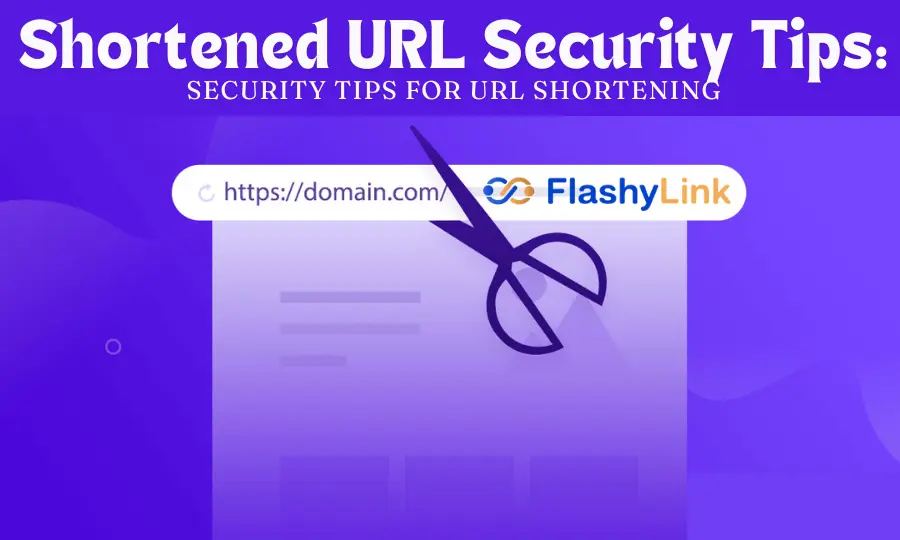
In today’s online world, you often see shortened URLs on various websites. These short links are great for easily sharing long website addresses, but they can sometimes be risky if you’re not careful.
In this article, we’ll look at what you should do if you encounter a shortened URL called Flashylink to keep your online activity safe. By learning how to inspect and understand these URLs and taking some additional security steps, you can avoid the problems that arise with these short links.
What Should You Do with Shortened URLs?
When you encounter a shortened URL, your first step is to look at the full website address. Some web browsers will display the full URL when you click a short link.
If your browser doesn’t do this itself, you can still find out the full URL yourself. Just right-click on the shortened link and select “Copy link address” or something similar. Then, open a new tab, paste the link in the address bar, and press Enter. It will show you the full website address hidden by the short link.
Using Shortened URLs: Security Tips
Shortened URLs like Flashylink offer a compact web address that’s quick to enter but obscures the destination site. It’s crucial to verify where the URL directs before clicking.
To check a shortened URL, employ the preview option available with many URL shorteners including those from flashylink. If the URL’s safety is uncertain, avoid clicking it.
When creating or distributing a shortened URL, consider alternatives first. If using one is necessary, clearly indicate its destination.
Be vigilant, as criminals often use shortened URLs to route to phishing sites or to download malware.
Revealing the Destination of Shortened URLs
Here are methods to uncover the destination behind a shortened URL:
Utilize the URL shortener’s preview function. Enter the shortened URL in your browser’s address bar and add specific characters to access a preview of the full URL:
1. flashylink.com: Insert “preview” between “http://” and “flashylink.”
Example: http://flashylink.com/analytics/
2. bit.ly: Append a + at the URL’s end.
Example: http://bit.ly/2lgPesi+
3. goo.gl: Append a + at the URL’s end.
Example: https://goo.gl/vLfoaW+
Before You Shorten a URL, Consider Alternatives
When you add links in an email or on a website, use clear link text and display the full URL. This method allows people to see where they are going before they click and helps screen readers by providing detailed information.
Avoid short URLs when directing people to a page that requires them to log in. Better to show the full URL and tell them they will need to sign in.
If you must use a shortened URL on social media due to space limitations, be sure to explain where the link goes. This keeps things clear and helps people trust your links.
Risks of Using Shortened URLs
➤ Loss of Visibility:
Because they hide the full website address, it’s hard to tell where a shortened URL will take you until you click on it.
➤ Phishing Attacks:
Shortened URLs are often used in phishing attacks to make you think you’re visiting a trusted site when really, the goal is to steal your personal information.
➤ Malicious Redirects:
Shortened URLs can send you to unsafe websites where you might encounter phishing, malware, or other harmful activities.
➤ Scams and Spam:
These URLs can lead to websites full of scams or spam, tricking you into giving away personal information or downloading malicious software without realizing it.
Tips for Safely Handling Shortened URLs
➤ Use URL Unshortening Services:
Before clicking a shortened URL, use services that show you where it leads without actually going there. Tools like Flashylink and Bitly are helpful for this.
➤ Hover to Preview:
Move your mouse over the URL without clicking to see the full link in the bottom corner of your browser. This helps you check if it looks suspicious before you visit the site.
➤ Know the Source:
Be careful with links from people or places you don’t trust. Always check who sent the link and whether they’re reliable.
➤ Avoid Unknown Links:
Don’t click on shortened links in unsolicited emails or messages. Trustworthy sources usually send identifiable links.
Further Reading:- How To Change a QR Code Destination
Summary
When you come across a shortened URL, it’s important to be careful to protect your online activities. You can do this by checking what the shortened URLs link to, looking for scams, choosing reliable URL shortening services known as Flashylink, and taking extra safety measures. By being careful and informed, you can reduce the risks of URL shortening and protect yourself from online threats.
Remember, it’s up to you to keep your online space safe, and being vigilant and informed can help you avoid risks and protect your personal information.
